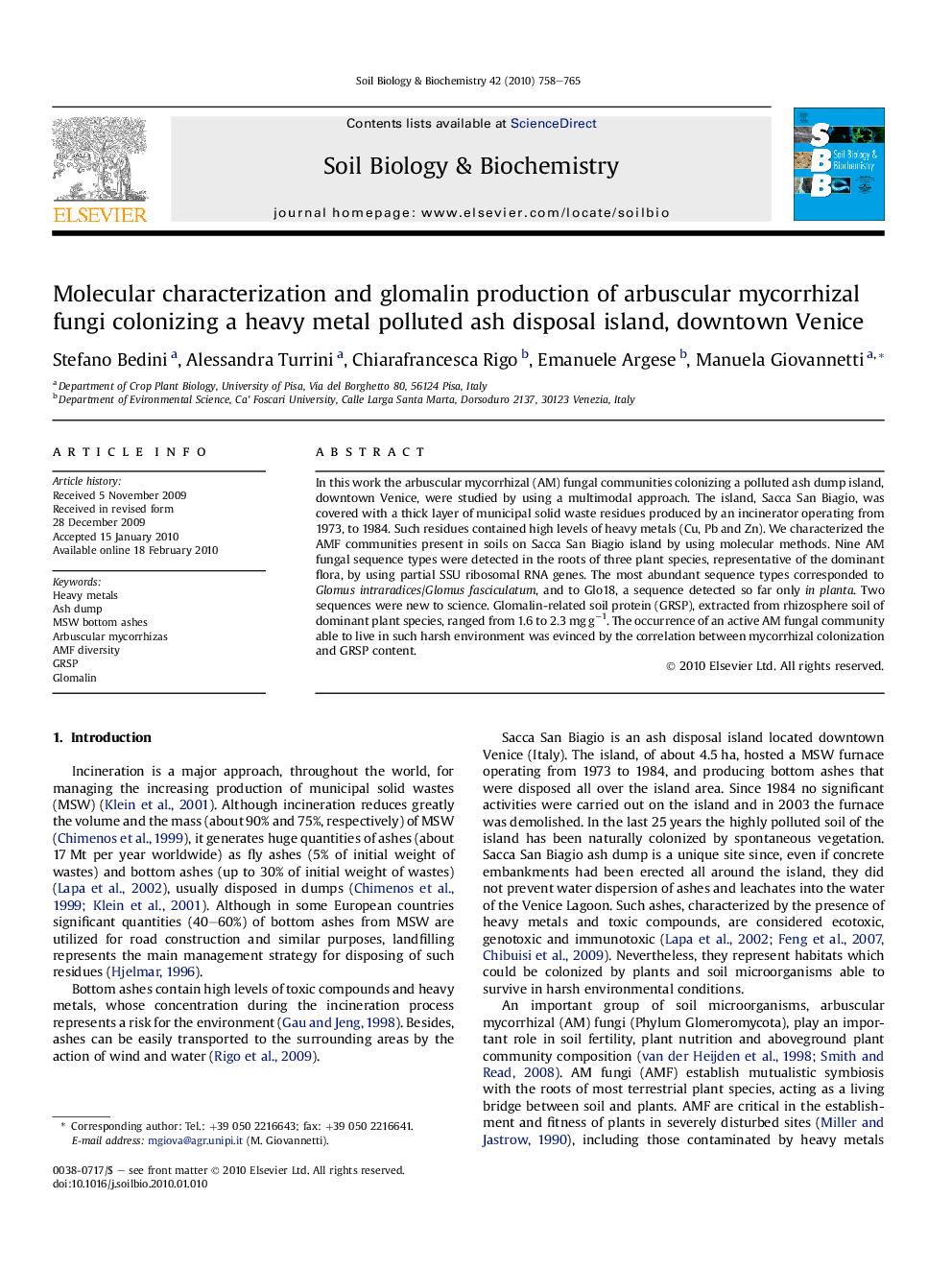| Article ID | Journal | Published Year | Pages | File Type |
|---|---|---|---|---|
| 2024963 | Soil Biology and Biochemistry | 2010 | 8 Pages |
In this work the arbuscular mycorrhizal (AM) fungal communities colonizing a polluted ash dump island, downtown Venice, were studied by using a multimodal approach. The island, Sacca San Biagio, was covered with a thick layer of municipal solid waste residues produced by an incinerator operating from 1973, to 1984. Such residues contained high levels of heavy metals (Cu, Pb and Zn). We characterized the AMF communities present in soils on Sacca San Biagio island by using molecular methods. Nine AM fungal sequence types were detected in the roots of three plant species, representative of the dominant flora, by using partial SSU ribosomal RNA genes. The most abundant sequence types corresponded to Glomus intraradices/Glomus fasciculatum, and to Glo18, a sequence detected so far only in planta. Two sequences were new to science. Glomalin-related soil protein (GRSP), extracted from rhizosphere soil of dominant plant species, ranged from 1.6 to 2.3 mg g−1. The occurrence of an active AM fungal community able to live in such harsh environment was evinced by the correlation between mycorrhizal colonization and GRSP content.
